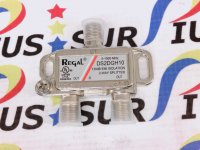I’m running a discone antenna in my attic that’s feeding signal via RG6 to a scanner in my basement. I’m happy with the signal it receives and since I’m fairly close to most of the antennas that I’m trying to hear I would like to split the signal to feed another scanner I have upstairs. That radio is using the included telescopic antenna and I’m constantly adjusting it. This was left behind by the previous owner of my house and I’m curious to get thoughts if using it would help to overcome some of the loss caused by a splitter or it it could introduce noise onto the line. Thanks in advance!
Use this or just a simple splitter?
- Thread starter bigmac58
- Start date



